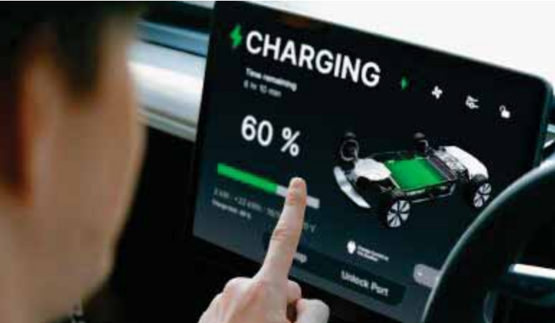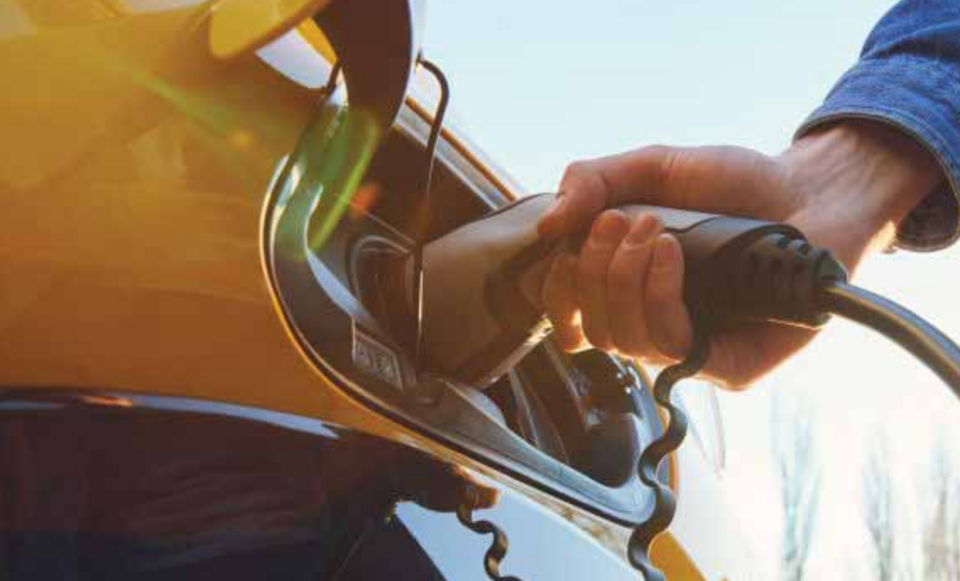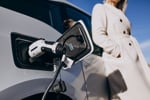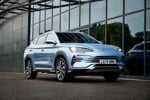In its latest Spotlight on Customer Experience and Retention, AM's Tom Seymour finds some of the methods and tools dealers’ sales teams should use to develop ICE owners’ curiosity about EVs.
The retail electric vehicle (EV) market in the UK is changing. Early adopters and environmental evangelists are already in EVs. For dealers it’s now about helping further support and educate the remaining customers that haven’t yet made the switch.
Dealers are up against it. There’s a constant barrage of negative press and misinformation against EVs and so retailers are in a position where they need to do some myth-busting and become trusted advisors who can cut through the noise.
This is particularly important due to the fact the UK Government is moving ahead with the ban of petrol and diesel vehicles in the future and introducing EV sales targets and fines for car manufacturers that aren’t getting that sales mix right.
Baroness Parminter, the House of Lords’ Environment and Climate Change Committee chair, tells AM that dealerships have a “hugely important role as trusted voices in their local communities to clear up any misinformation around EVs and explain the benefits”.
She says: “That doesn’t mean sugar-coating, but having some honest conversations.”
Changing Conversations
 Fraser Brown, managing director at MotorVise, is working directly with AM100 dealer groups and car brands on how these EV conversations with customers are changing.
Fraser Brown, managing director at MotorVise, is working directly with AM100 dealer groups and car brands on how these EV conversations with customers are changing.
The sales mix for the top performing dealerships is at 30%. Brown says retailers should be looking at between 15% and 30% of the new car sales mix right now if they represent manufacturers with a broad range of EVs.
Anything below 15% would suggest a review is needed on how sales executives are talking about EVs at the point of sale.
Importantly, this isn’t about just looking for customers that are interested in EVs, but inserting zero emissions technology into a sales conversation as an attractive option that makes sense from a total cost of ownership perspective.
One of the biggest benefits for EVs is how much they cost to run. So, while an EV may be more expensive up front compared with a petrol equivalent, the running costs are where side-by-side comparisons look a lot more interesting.
A simple example of this would be that a customer charging their EV off-peak at home could be paying £6 for a “tank” of energy compared with £50 for diesel. That’s nearly a 90% reduction in fuel costs.
Fuel Savings
EVs may cost more on a new car PCP deal each month, but factoring in the fuel savings could change the conversation for customers looking at the figures.
MotorVise has created its own calculator that can help salespeople demonstrate the running costs between internal combustion engine (ICE) and EV at compare.motorvise.com on a pence per mile basis.
Specialist home charge point installer Smart Home Charge has also developed a “cost to charge” tool that can demonstrate the differences in home energy costs specific to each EV, across a range of tariffs, as well as comparisons with home energy, rapid charging and destination charging.
This is one of the biggest questions for customers when factoring whether an EV could be right for them. Access to a domestic charger unlocks the ability for customers to seriously slash their vehicle running costs with an EV, particularly if they’re able to use EV specific home energy tariffs from the likes of Octopus, OVO and more.
That means sales executives need to get much more comfortable talking about home energy,which is potentially a new territory for them.
Charging Access
Brown says its research estimates that more than 65% of drivers have access to a domestic charger and of those drivers, in excess of half are happy to engage in conversations about an EV.
He says: “You have to establish where they park their car, whether they have a smart meter, who they’re with for energy and what’s the maximum number of miles they do on a typical day. “It's then about selling them the right car for the range they’ll be doing.”
Richard Norris, founder of south west-based EV specialist car retailer Drive Green, says the sales consultation for a potential EV customer would be completely different for someone that can’t charge from home.
He says: “The reality is that, now all the early adopters and enthusiasts have jumped in, the number of customers we see without access to a home charger is miniscule. Customers that are new to EV are charging their vehicles at home.”
Nightime Hurdle
MotorVise’s own survey data shows that 90%-plus of sales people don’t have access to overnight charging at home. Brown says: “It’s one of the biggest hurdles we have with EV sales because we have a set of people
that are supposed to be our advocates that aren’t living with this technology.”
It’s not as simple, right now, as sending every sales executive home with an EV and putting a home charger in place. Some might not have access to off-street parking. Dependent on their situation, the sales executive might not even be familiar with their household energy bills.
Also, dealer groups might not want sales executives putting miles on EVs due to the depreciation.
Brown says: “If you ask a sales director at a dealer group how much it costs to charge an EV overnight at home, can they tell you?
“What is the difference between a kilowatt and a kilowatt hour? We have to change the language and simplify things. Salespeople need deep knowledge so that they can simplify it for customers. You have to turn all that technological speak and put it into plain English for sales people and customers alike."
An example sales executives could use could be – an EV does 250 miles on a full charge and costs £7.50 to fill up overnight at home. That’s 3p per mile. However, the petrol version does 350 miles on a full tank and costs £80 to fill up. That is 22p per mile. So 12,000 miles a year will cost you £2,640 for the petrol car and £360 for the electric, saving you £2,280 in fuel per year or £190 per month.
Brown says: “These are the sort of examples and figures that are easy for customers to understand.”
EV Customer
 Norris says the EV customer profile is changing, behaviours are evolving and the time spent with customers has probably halved.
Norris says the EV customer profile is changing, behaviours are evolving and the time spent with customers has probably halved.
He says: “Since used EV prices collapsed, we’re attracting a much wider selection of vehicles with greater zero emissions ranges, a lower price point, an expansion of the client base and the questions that come with them.
“A lot of the chief issues people had before are less relevant now, such as range. Prior to this point, it was about whether you could afford to get the range you needed.
“Now it’s less relevant because £12,000 on a used EV might have got you 100 miles of driving range 18 months ago. That same money will get you 200 miles now.”
Norris says critical points to consider can be around addressing anything that might be unexpected about how the technology will perform. This includes things such as the variability in driving range, dependent on the time of year.
Norris says: “You have to understand your products and how they behave. If expectations aren’t managed correctly it can open you up to problems.
“Just quoting WLTP figures is not helpful. We mitigate these instances by realistically managing expectations. It’s really important customers understand these key facts and to make sure they’re getting an EV that suits their needs.”
Toby Marshall, GWM Ora managing director, has been working with its retail network, which is around 30 locations, to get customers into extended test drives to get a deeper exposure into EV technology.
GWM Ora recently conducted its own consumer research in the UK market and found that of 2,000 consumers surveyed, 79% of current EV drivers would ‘definitely’ purchase another EV in the future.
Marshall says: “Ultimately, we want GWM ORA customers to feel confident and comfortable in their decision to buy an electric vehicle and make the most of the amazing benefits on offer. Our retail partners play a key role in helping with that.”
Hitting The Range
Norris says there’s really no such thing as an accurate range figure for EVs. While he believes the majority of car manufacturer WLTP figures (the number of miles it’s possible to get out of a single charge from your EV) are achievable, there are a huge number of variables that can affect it.
He says: “I would say the majority of WLTP figures are attainable, but it’s whether you’re going to drive in a way that’s going to get you to that.
“On the coldest days of the year, are you going to do your longest drives of the year?
“We give what we refer to as a real-world range. It’s a figure based on our own experience that helps with explaining what customers can expect.”
 Bill Fennell, chief ombudsman and managing director of The Motor Ombudsman, says that although complaints about EVs remain few in number, due to the relative infancy of the parc compared with ICE, the majority of disputes are the result of the perceived shortfall in the level of customer service received from a business, either at the point of purchase, or during ownership.
Bill Fennell, chief ombudsman and managing director of The Motor Ombudsman, says that although complaints about EVs remain few in number, due to the relative infancy of the parc compared with ICE, the majority of disputes are the result of the perceived shortfall in the level of customer service received from a business, either at the point of purchase, or during ownership.
Fennell says areas for retailers to think about addressing include how periods of colder weather and environmental conditions can affect range, or how components can be potentially subject to a different level of wear compared with that found on ICE vehicles.
This could be differences in brake or tyre wear as a result of different driving styles, EV vehicle weight, acceleration and regenerative braking technology.
Fennell adds: “Thousands of franchise car dealerships and independent retailers nationwide are committed to our vehicle sales and service and repair codes, and to delivering high standards of work and service, beyond those required by law, throughout the different touchpoints of a customer’s vehicle purchase and ownership journey.
“This is paramount to helping avert complaints, even more so in the EV market, where consumer understanding of new technologies can be lower.”
Practical Advice
 James Hosking, director of AA Cars, says many of the concerns drivers have about EVs are understandable though probably unfounded, according to research.
James Hosking, director of AA Cars, says many of the concerns drivers have about EVs are understandable though probably unfounded, according to research.
Nearly half of drivers (45%) worry about EV battery lifespan, while 44% doubt their ability to assess a used model's condition. Meanwhile, a third (33%) fear second-hand EVs may offer less range than new ones.
Hosking says: “Drivers are open to receiving advice from dealers. Almost half of drivers agree that receiving practical advice from a dealer would make the process of buying an EV easier. Important information that customers weigh up during the buying process includes details on home charging, real-world EV range and how it applies to their travel habits, and battery lifespan.
“Dealers must ensure all sales staff have the knowledge to talk confidently about EV charging, range, batteries and depreciation if they wish to capitalise on the interest in greener vehicles.”
AA Cars has launched its own free EV dealer guide to equip dealerships with essential knowledge, such as EV models, charging options, and terminology, that they can pass onto customers.
Hosking adds: “By providing comprehensive education on EV technology and offering personalised guidance tailored to individual needs, dealerships have the potential to accelerate the switch to EVs.


















Login to comment
Comments
No comments have been made yet.